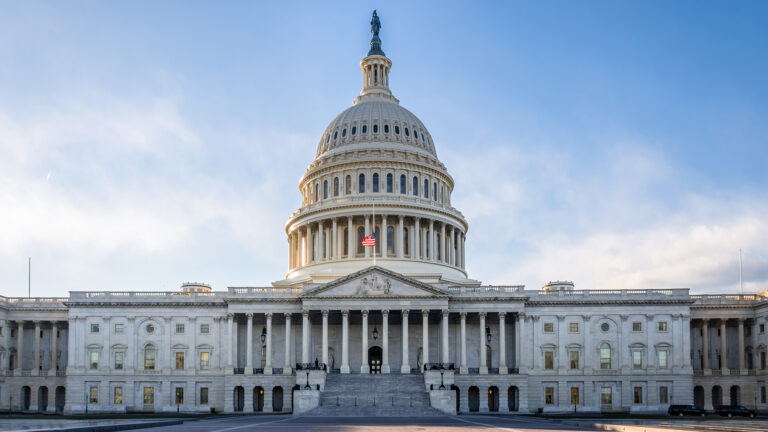Interview by Muskan Arora
Shoaib Khan, the CIO of NJ Pension fund, previously spoke about emerging managers, manager selection and more. In this conversation we dive specifically to India to understand the types of opportunities and concerns he has for+ the region. Khan will be visiting the country this year to access the policies, economics and social environment for future investments.
While numerous allocators are nervous about allocating in India, Khan is using the geopolitical tensions, Modi-government policies and the growing youth of India to drive his investments by identifying the growing sectors and strategies.
Muskan Arora: What are the biggest opportunities that you
see rising in the next 5 years in India? Please specify a sub-strategy and
sub-sector.
Shoaib Khan: India has a number of factors going for it. A very large population, favorable
demographics, strong education system focused on science, math and technology,
entrepreneurial appetite, strong GDP growth, with all these factors leading
to a growing middle class. India can leverage these tailwinds, and, if executed
well, can produce highly constructive results.
At the same
time, the country has some catching up to do in several areas. While progress
has been made, the country’s infrastructure is severely lacking, especially
given the size of the population and the concentration of people in several
major cities. The manufacturing base has not historically focused on high end
or high technology production. If you look at the list of top exports out of
India, you will see refined petroleum, diamonds, pharmaceuticals, jewelry, and
rice. Unlike China today, the country’s industrial production will need a
transformation to put in place the processes needed, if it is to significantly
benefit from the opportunities created by a global shift in supply chains. At
the same time, while it does that, the country has the benefit of a low-cost
labor base which affords it a runway to execute on major improvements.
In addition to industrial growth, with a population of over
1.4 billion people of a median age of 28, India’s path for consumer growth is
also well placed. The demand for consumer products will continue to grow and
include electronics, phones, cars, fashion and food, to name just a few. Throw
in there the increasing demand for a wide range of entertainment and travel
options.
So, to answer your question, there will be opportunities for
considerable growth in India over the next decade or two. The growth can come
from effectively leveraging the positive factors the country already has and
applying those to the areas which are currently lacking. In other words,
effectively utilizing the large, younger and increasingly educated population
base to address its infrastructure and industrial production needs. At the same
time, India already has a strong base in certain industries such as
pharmaceuticals, fintech and electronic payments, which will continue to grow, and provide the country an edge in these areas.
For institutional investors, the opportunities will derive
from both the opportunities and challenges facing India. Because there is a
need for the country to catch up in several industries and areas, there will be
a need for capital. A convergence of ideas, capital, reasonable-cost labor,
entrepreneurial spirit and strong work ethics, accompanied by good execution can
result in a transformational change. I believe there will be opportunities in
several areas including technology, manufacturing and services as well as the
many sectors and sub-sectors that come out of these.
Lastly, the services sector cannot be ignored. While India
is known for serving as the tech support for many companies around the world,
the opportunity set is much broader than just that. As one example, let’s take
insurance. The reality is that the insurance industry in India is at its
infancy currently and most of the population is relatively under-insured.
Whether that’s for automobiles, homes, health or life insurance. Now you layer
on the growth in technology and the use of technology and then combine that
with the need for insurance to serve the increasing number of cars on the road,
increasing home ownership and meeting the health and life insurance needs of a
growing middle class. Very soon you have a wide canvas for some meaningful
improvements in a company’s ability to reach clients in order to meet demand.
There are a number of similar opportunities I can point to where there is a
wide gap between current and potential market demand. But I think you get the
point. By the way, I am of the belief that for institutional investors, there
will be opportunities in both, public and private market asset classes.
Arora: When allocating in India, what are a few factors
that investors forget to take into consideration? And why?
Khan: India is on a growth trajectory and will
continue to see improvements in the regulatory and compliance environment. It
is reasonable to expect that enforcement of rules, regulations and policies
will continue to improve. For instance it’s not that long ago that India
restructured its bankruptcy regulations and processes. This was done in order
to meet the needs of creditors and other investors. Prior to the overhaul of
the bankruptcy code, companies were effectively able to circumvent and avoid
creditor pressure while the bankruptcy process lingered on for an extremely
long time. From an investor’s perspective, anything that prolongs a legal
outcome or creates uncertainty needs to be viewed with caution.
The most obvious answer to your question is that the risk of
investing in India is higher than compared to North America or Europe. While
economic risks are always at the forefront, investors need to take into
consideration other risks which may be part of the landscape being looked at. I
think we have already discussed the macro-economic rationale for investing in
India and why capital inflows into the country are likely to further increase
in the future.
My view is that it makes a lot of sense for investors to
consider increasing their portfolio exposure to India with a view to grow it as
the opportunity set grows. At the same time, investors should be mindful of
potential risks such as further currency depreciation, especially in the event
there is a major hiccup in the execution of future development plans. Just to
be clear, what I am referring to here is not the usual level of depreciation
for the Indian Rupee that investors assume when investing in India. That usual
level of currency depreciation hovers around 3% per year, which is fine and
part of the calculation when determining potential future performance. Where I
think there should be caution around is a more significant currency
depreciation due to factors such as weak economic fundamentals, high inflation,
fiscal and monetary policy errors, increase in social or political turmoil or
other similar factors which potentially result in a loss of confidence. If this
were to occur, the impact to foreign investors can be meaningfully adverse.
Another factor to keep in mind when investing in Indian
markets, especially in public equity markets, is that valuations are relatively
rich. And while they may remain high as has been for quite a while, investors
continue to see further growth in equity valuations driven by both, earnings
growth and multiples. If economic conditions remain constructive and markets
behave normally, this is usually not a problem. However, in a downturn,
earnings growth across industries are adversely impacted and market sentiment
can change very quickly. The pain of a market downturn can be exacerbated in a
market which has been running at high valuations for some time. This
unfortunately is the risk in investing but even more so when investing in
markets characterized by rich valuations.
Adding another factor to the mix, we must keep in mind that
the Indian investment landscape is still in its early stage, especially when
one looks at private market asset classes such as private equity and private
credit. That presents both an opportunity and a challenge. It’s an opportunity
to establish investments at an early stage of a country’s development but it
also means that markets are still thin and can lack a sufficient number of
institutional investors. Often when markets are moving through the growth
stages, there is also a shortage of good institutional talent. This is one of
the factors that investors in the Indian private market landscape should
consider. While the activity levels in venture capital, growth and buyout on
the private equity side have picked up significantly as compared to just a few
years ago, and while the private credit horizon has expanded, especially since
the restructuring of the Indian bankruptcy code and the shadow banking crisis a
few years ago, there is much room for growth. In order for growth to continue, we
will need to see an increase in the number and level of talent that has long
standing and deep experience which would allow for proper and institutional
execution.
Arora: Investors are worried about if they would be able
to get their money back when investing in India, do you have any experience or
thoughts around the same?
Khan: Thankfully, I do not have experience with that
and have not had to deal with that severe of a situation. That’s not to say
that we would not incur losses here and there because, after all, we are not
investing in risk-free assets in these countries.
I would think that those investors that are worried about
not receiving their investment capital back are not looking to invest in India.
After all, investing requires confidence and high conviction that you are
making good investments. If there is a lack of confidence or if an investor
views other opportunities to be a better fit for their portfolio, they will
gravitate towards those investments. For markets to do well and function
normally, confidence is not only important, but is a requirement.
Where investor confidence is concerned, the government plays
a pivotal role in ensuring that appropriate regulations and policies are in
place, proper ownership rights and laws are embedded into the country’s system
and timely enforcement is both available and exercised. For example,
intellectual property laws are critical for investors to have the confidence to
invest in the areas of venture capital, growth and private equity in general.
In order to provide capital to companies with proprietary technology, investor
need to know that the opportunity to capitalize on the technology will be
available without infringement.
Arora: Could you specify a few concerns that investors
might have while investing in India?
Khan: I would think a lot of the concerns are the
same as investing in other countries. On the private markets side, these
include sourcing and investing with the best investment managers and firms
available. To make those investments, a lot of diligence needs to be conducted
and this often involves several trips and meetings. For some public pension
funds that can be challenging at times and for that reason we utilize the input
and resources of our partnerships with manager of managers that have local
presence in Asia. Also, keep in mind that making the investment is just the
beginning because after the investment is made, the process of monitoring those
investment goes on for many years.
Within public equities, we have exposure to India in the
pension fund portfolio but so far, our exposure has been using investment
advisers who have been provided mandates to invest in emerging markets
including India. We are not yet at a point where we have a country-focused or
India Fund. What that means is that we are not currently making calls on
specific sectors in India. Most of our exposure tends to be towards
sectors and companies one would expect. With that said, the one sector I am
cautious on is Indian real estate.
https://www.marketsgroup.org/news/Modi%E2%80%99s-re-election-makes-India-hotter












